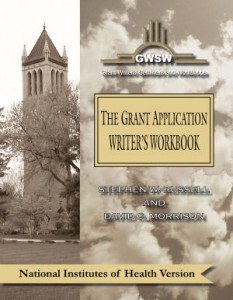When I was a graduate student, one particular research group caught my attention because they seemed to publish a manuscript at least monthly. It didn’t take long, however, for me to appreciate that all of their publications were very similar; it was only the Results Section that changed substantively from one publication to the next.
At a time when writing research manuscripts intimidated me, I realized how easy preparing new manuscripts was for this group. Some minor wordsmithing of one of their previously published Introductions and Discussions was required. The Methods section could be composed by citing methods from their previous publications with, perhaps, a description of one or two new methods. All that remained was to write a new Results Section and Abstract, and come up with a new Title. Brilliant, I thought!
Although this approach worked well for this group 30 years ago, it is less likely to be a winning strategy for long-term success today. Ronald Vale (PNAS, 2015) recently examined manuscripts published in three top biomedical journals and concluded that manuscripts published in 2014 contained substantially more data than those published in 1984. He also noted that this trend permeates through the biomedical publication industry, specifically stating that “with the trend toward publishing more mature scientific stories, it has become harder to publish just a key initial finding or a bold hypothesis.” He goes on to present a hypothetical argument about the seminal publications of Watson and Crick describing the structural model for DNA and suggests that these manuscripts may not have included sufficient information to justify publication in the modern era.
It was not until I completed my postdoctoral training that I heard of the “Least Publishable Unit” (LPU), a term coined to refer to the smallest unit of information required to generate a peer-reviewed publication. Publishing of LPUs is also referred to as “Salami Slicing Science” (Huth EJ. Ann Intern Med, 1986). The historical motivation for slicing a relatively large body of information into smaller publishable components (i.e., salami slicing) is based largely on the perception that “more is better.”
The arguments by Vale presented above, however, suggest that manuscripts with more data, that tell a more mature scientific story, are likely to be more appealing to higher-impact journals than LPUs. In an era in which funding agencies are emphasizing scientific impact, the concept that “more is better” probably no longer applies. For example, the current NIH biosketch allows applicants to list a maximum of four peer-reviewed publications in support of each of their major scientific contributions. Under these conditions, having eight publications in lower-impact journals, with a relatively narrow message and few citations, would undoubtedly be less convincing than four publications in higher-tiered journals, with a broader message and more citations, particularly since only four publications can be used to support your scientific contribution.
Salami Slicing Science is generally frowned upon by Editors because increased numbers of manuscripts increases publication costs, contributes to reviewer fatigue, and decreases the number of times a manuscript may be cited, thereby decreasing the impact factor of their journal (See Dupps, WJ and Randleman, JB. J. Refract. Surg 2012). Additionally, authors must be cautious of self-plagiarism and duplicate publications. On the other hand, slicing manuscripts into smaller pieces permits earlier publication of some of those pieces, promoting more rapid scientific advancement and enhancing feedback to authors prior to publication of subsequent manuscripts. It can also facilitate decisions about authorship, such as permitting assignment of the first-author position to different individuals on different manuscripts. Writing smaller, more focused manuscripts may also seem less daunting to investigators in the early stages of their career and increase the frequency of interactions with Editors and Reviewers, thereby building confidence more rapidly.
Thus, there are arguments both for and against slicing your manuscript into two or more pieces prior to submission. These factors should be discussed with all potential authors prior to making a decision. If your list of authors does not include someone from your field with considerable experience publishing or serving as a reviewer of grant applications, it may also be advisable to seek the guidance of such an individual before submitting your manuscript for publication. Their experience may be invaluable in helping you make this critical decision.
Chris Papasian presents the GWSW Seminar Writing and Publishing High-Impact Research Manuscripts and is coauthor of our workbook, Writing for Biomedical Publication. He is currently Professor and Chair of Biomedical Sciences at the UMKC School of Medicine, and Editor of the ASM journal, Clinical and Vaccine Immunology.

